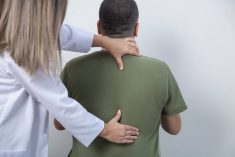Anxiety is something all of us experience, to varying degrees, at some point or another. It can come with many different symptoms. Some of us tend to experience anxiety in our minds; some experience it more in their chests and cardiovascular systems; others experience it in the digestive system. Some lucky individuals experience all of the above.
The sensations that come with what we often call anxiety are often signs our nervous systems have shifted gears to help us prepare or act on some perceived stressor. Often we get “stuck,” in a way, in that shifting of gears, with no clear action to take or an out-of-context reaction from our bodies.
If we consider that anxiety is one way our body is essentially doing what it knows how to do to protect us, we can find ways to use the excess energy that gets created in that “time to take action” physiological output. Anxiety is not usually about finding ways to “just calm down” and is almost always about finding a safe and context-appropriate way to move energy through the body to regulate our physiological response.
Read Also

Gentle treatments for pain in the neck
Heading toward year-end, people unknowingly tense up against the cold and busyness, causing neck pain that can often be treated with appropriate support and gentle mobility, athletic therapist Kathlyn Hossack says.
READ MORE: Clear, actionable steps to support mental health
I write quite often about various breathing practices to help our bodies shift gears. Breath can certainly be a support for anxiety; however, it isn’t always the best place to start. Instead, I often recommend beginning with some more direct body-based methods to discharge energy before working directly with the breath to regulate.
Anxiety loves movement, because movement implies action on a physiological level. If you’re feeling quite amped-up, it can be very beneficial to let movement be a way of expressing it. Simply shaking the hands, hopping, wiggling, running on the spot or dancing can be very effective and relatively quick ways to move energy through and out of the body. You can also gently tap or pat the body, beginning at the chest and drumming your way down the front all the way down the legs, up the sides and down the back, to help bring you back to the moment. Sometimes I put on music and quite literally dance it out, wiggling and shaking as much of my body as I can to the beat of the music.
A practice I call “tense and release,” also commonly known as progressive muscle relaxation, can also be supportive. This practice involves consciously bringing tension to areas of the body for a few seconds, then consciously releasing the tension. This I would combine with the breath as follows: inhale to shrug the shoulder and clench the fists for five seconds; >big< exhales, like a sigh through the mouth, to release that tension; and let the shoulders and arms relax. Repeat these four to five times. You can do a similar version with the lower body: inhale to clench your butt cheeks, point the toes and squeeze the legs toward one another for five seconds; big exhale with a sigh to release. Repeat four to five rounds.
Anxiety is a normal part of the human experience. If sensations associated with anxiety intrude on your ability to engage in daily life, it’s important to seek support. Practitioners who can help with anxiety include counselors, psychologists, somatic therapy practitioners, mindfulness coaches — and even some manual therapists who now have training in working with the physical manifestations of anxiety through massage, acupuncture, movement and lifestyle guidance.















